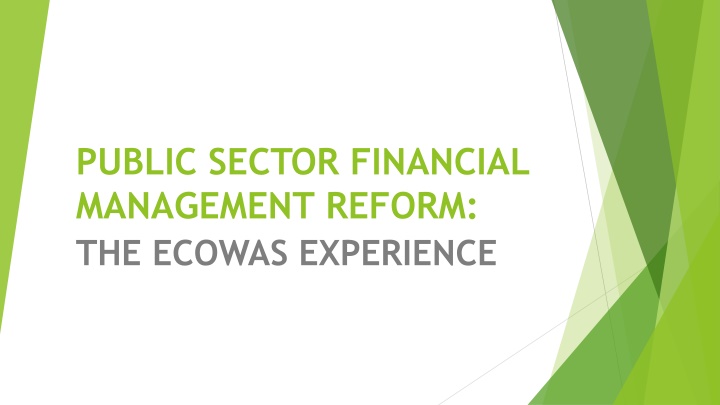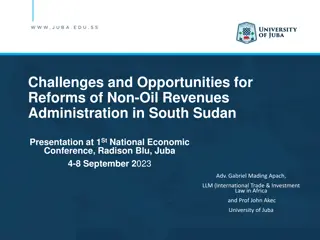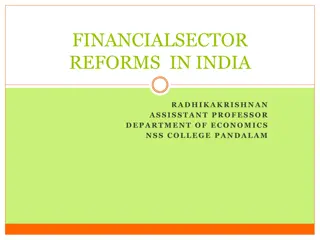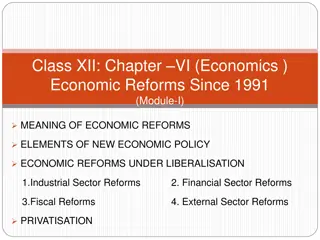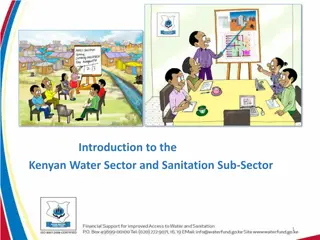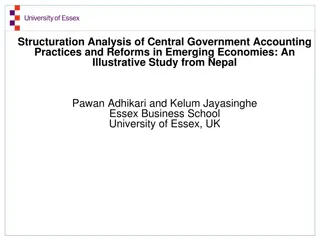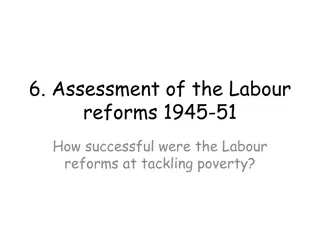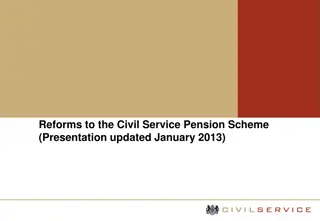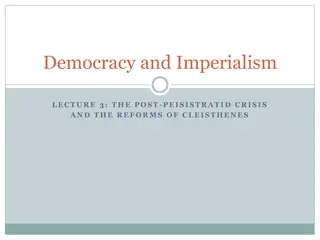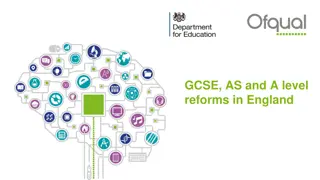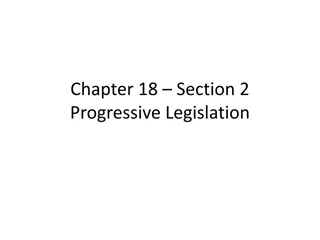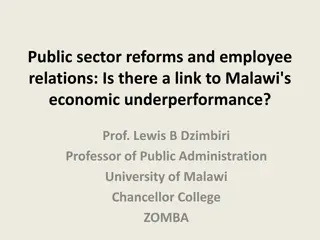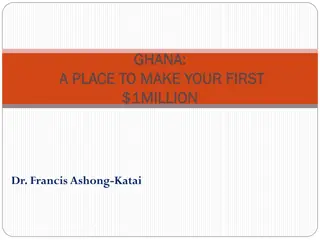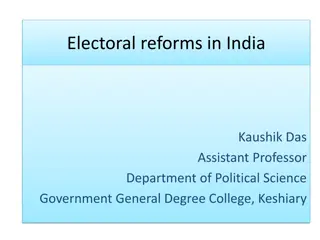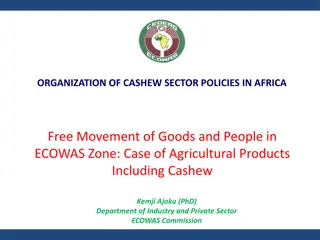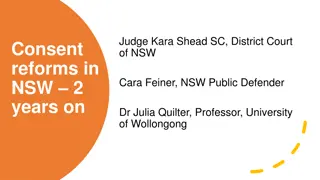ECOWAS Financial Management Reforms
Developing and developed countries have been undertaking Public Sector Financial Management Reforms, crucial for economic growth and achieving developmental goals. This article focuses on ECOWAS' journey in implementing these reforms, including areas of assessment, identified weaknesses, and components of the reform strategy such as Finance, Human Resources, Procurement, Audit Assurance, and Internal Controls.
Download Presentation

Please find below an Image/Link to download the presentation.
The content on the website is provided AS IS for your information and personal use only. It may not be sold, licensed, or shared on other websites without obtaining consent from the author.If you encounter any issues during the download, it is possible that the publisher has removed the file from their server.
You are allowed to download the files provided on this website for personal or commercial use, subject to the condition that they are used lawfully. All files are the property of their respective owners.
The content on the website is provided AS IS for your information and personal use only. It may not be sold, licensed, or shared on other websites without obtaining consent from the author.
E N D
Presentation Transcript
PUBLIC SECTOR FINANCIAL MANAGEMENT REFORM: THE ECOWAS EXPERIENCE
BACKGROUND For over three decades, developing and developed countries have been undertaking Public Sector Financial Management Reforms. These reforms are critical because the Public sector is the pivot on which economies grow. The public sector is also the main tool available to governments for the implementation of their developmental goals and objectives.
The public sector oversees the creation of conducive environments for all the other sectors to function. It is therefore imperative that best financial management practices are adopted in the Public Sector to ensure the smooth operation of all other sectors dependent on the public sector.
It is important to point out that Public Sector Financial Management reforms are effective in the following instances: When there is a strong commitment from the leadership to their being implemented Where the Public Sector Financial Management reforms strategy and the processes involved in their implementation have been customized to the specific institution
Where there have been strong efforts to lead, oversee and direct the reforms by the leadership. The aforementioned have been at the core of the advancements made in the Public Sector Financial Management reforms in ECOWAS.
THE ECOWAS JOURNEY SO FAR To commence the reforms, an assessment on the compliance level of ECOWAS with international standards on financial and administrative management was done. Subsequently, weaknesses in the ECOWAS rules and procedure and the areas where there was lack of compliance were identified.
To improve on these deficiencies, the management at ECOWAS embarked on Public Sector Financial Reforms with support from the European Union. The implementation in ECOWAS consists of five main components; Finance, Human Resources, Procurement, Audit Assurance and Internal Controls.
FINANCE Comprising of: Formal and on the job training on ECOWAS internal control framework Internal control assessment templates for payroll, time management and related expenditures and allowances. Results based budgeting and reporting Compliant periodic and annual budgets
FINANCE CONTD Production of IPSAS compliant Financial Statements IPSAS compliant financial policies defined and implemented IPSAS compliant Financial Statements and Annual Reports issued and provided to stakeholders
FINANCE CONTD Deployment of ECOWAS Internal Control Framework within the new Office of the Auditor General Monitoring process on Internal Control recommendations Updated Financial Regulations and Manual of Financial Management procedures.
FINANCE CONTD ECOLink Phase II Internal control design reflected in ECOLink Phase II blueprint compliant with EU Pillar assessment requirements Fixed Assets Management and Electronic Filing and Archiving Systems
HUMAN RESOURCES Comprising of HR Project Monitoring Committee Job descriptions and Key Skill Areas ECOLink HCM master data Employee Performance management Workshop on the revision of the Staff Regulations
HUMAN RESOURCES CONTD Planning activities for the next semester Recruitment HR Policies and Procedures Manual Payroll process review workshop
COMPONENT 3: Procurement (and Grants) Comprising of Procurement and Grant Codes Procurement and Grant manual Procurement and Grant templates
COMPONENTS 4 & 5: AUDIT ASSURANCE AND INTERNAL CONTROLS
AUDIT ASSURANCE & INTERNAL CONTROLS Comprising of Internal control environment Code of ethics Code of ethics endorsed by management communicated to staff Procedures for non-compliance
AUDIT ASSURANCE & INTERNAL CONTROLS CONTD Organizational structure Clear reporting lines & responsibilities assigned Effective delegation of authority enforced Job description for top and middle management Job description for all staff Up to date HR policies and procedures
AUDIT ASSURANCE & INTERNAL CONTROLS CONTD Governance & oversight Audit committee Compliant rules for appointment, remuneration and resignation of Audit Committee members Effective internal audit unit Management oversight on design and operational effectiveness of internal control
AUDIT ASSURANCE & INTERNAL CONTROLS CONTD Risk assessment Formal risk assessment process Risk register & monitoring process Monitoring Effective internal audit unit Timely remedial action on internal control deficiencies
AUDIT ASSURANCE & INTERNAL CONTROLS CONTD Control Activities Prevention, detection and correction of fraud Effective filing and archiving systems Recruitment system and procedures Controls over salary and travel related expenditures
AUDIT ASSURANCE & INTERNAL CONTROLS CONTD Information Systems and Communication Timely management reports Timely production of Financial Statements Timely reporting to Development partners Timely follow-up of management letters
LESSONS LEARNED Theinvolvement and buy-in of management is critical in the successful implementation of public sector financial management reforms. There is the need for Management across all levels to appreciate that the reforms are not essentially financial but that the scope of these reforms span across all the sectors.
LESSONS LEARNED CONTD The need for the technical competence and authority of those involved in the coordination and management of the reforms. The need for those coordinating and implementing the reforms to manage and take control over all external and donor support received while implementing the reforms. Constant training of all those involved to ensure skills are continually upgraded to align with current best practices.
CONCLUSION The implementation of Public Sector Financial Management Reforms in ECOWAS is an ongoing process. These reforms are expectedly complex and the initial plans that were suitable at inception have often needed reinventing. There is continuous monitoring to ensure speedy identification and resolution of any problems encountered. Finally, the involvement and commitment of Management and various stakeholders has been a critical success factor in the implementation process.
THANK YOU MERCI OBRIGADO
